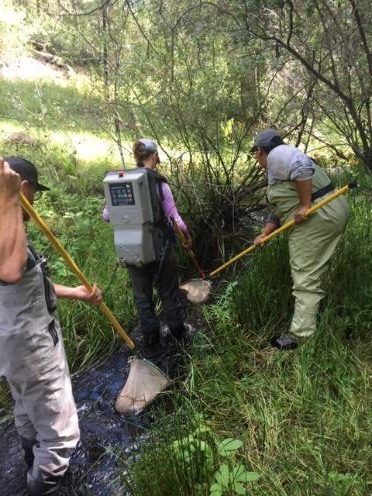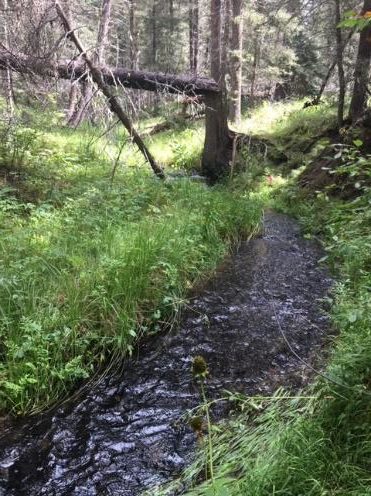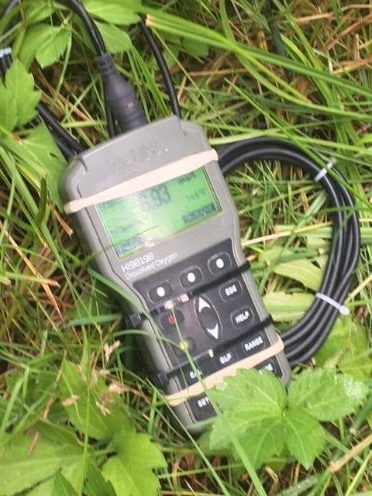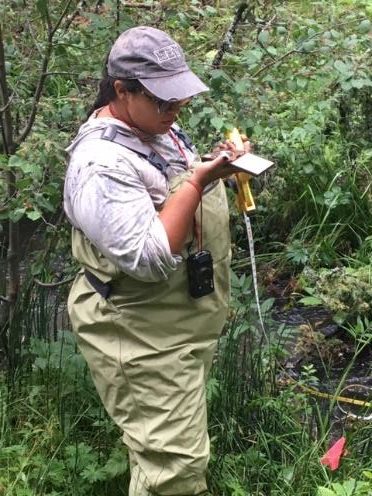What temperature, pH, canopy cover, and other environmental conditions are most suitable for the Rio Grande chub and Rio Grande sucker? This is a primary question that Stephani Clark Barkalow and other scientists at American Southwest Icthyological Researchers LLC. (ASIR) are trying to answer using electrofishing and habitat surveys in streams in northern New Mexico. This work is being done in partnership with the Share with Wildlife program at the New Mexico Department of Game and Fish (Department).
The geographic ranges of Rio Grande chub and Rio Grande sucker in New Mexico have shrunk due to a variety of factors, including competition with or predation by other fishes, disease, and loss of key food resources (e.g., algae). Habitat loss and fragmentation are expected to be key drivers for the decline of these species as well, yet the habitat requirements of both species are poorly understood. Gathering data on the ecology of these species is especially important at the current juncture since they are both under review for potential listing as threatened or endangered under the federal Endangered Species Act (ESA). The more information the Department and U.S. Fish and Wildlife Service have regarding these species and their status and needs, the better-informed the decision regarding whether or not to list these species under the ESA will be.
In summer 2022, researchers from ASIR conducted electrofishing surveys and gathered fish and habitat data at over 30 sites across 8 rivers on the Santa Fe and Carson National Forests and Taos Bureau of Land Management lands. These surveys were complicated by wildfires, including the Cerro Pelado fire, and associated post-fire flooding, which led to forest closures and limited access to the project field sites. ASIR persevered and were able to meet the anticipated number of survey sites and measure habitat variables including water depth and flow, substrate composition, in-stream cover, and water quality variables (e.g., dissolved oxygen, salinity, and turbidity). The Department looks forward to the results of statistical analyses regarding the relationship between numbers of the target species detected and measured environmental variables.
Learn more about the non-profit Share with Wildlife program of the New Mexico Department of Game and Fish, supported exclusively by donations.






